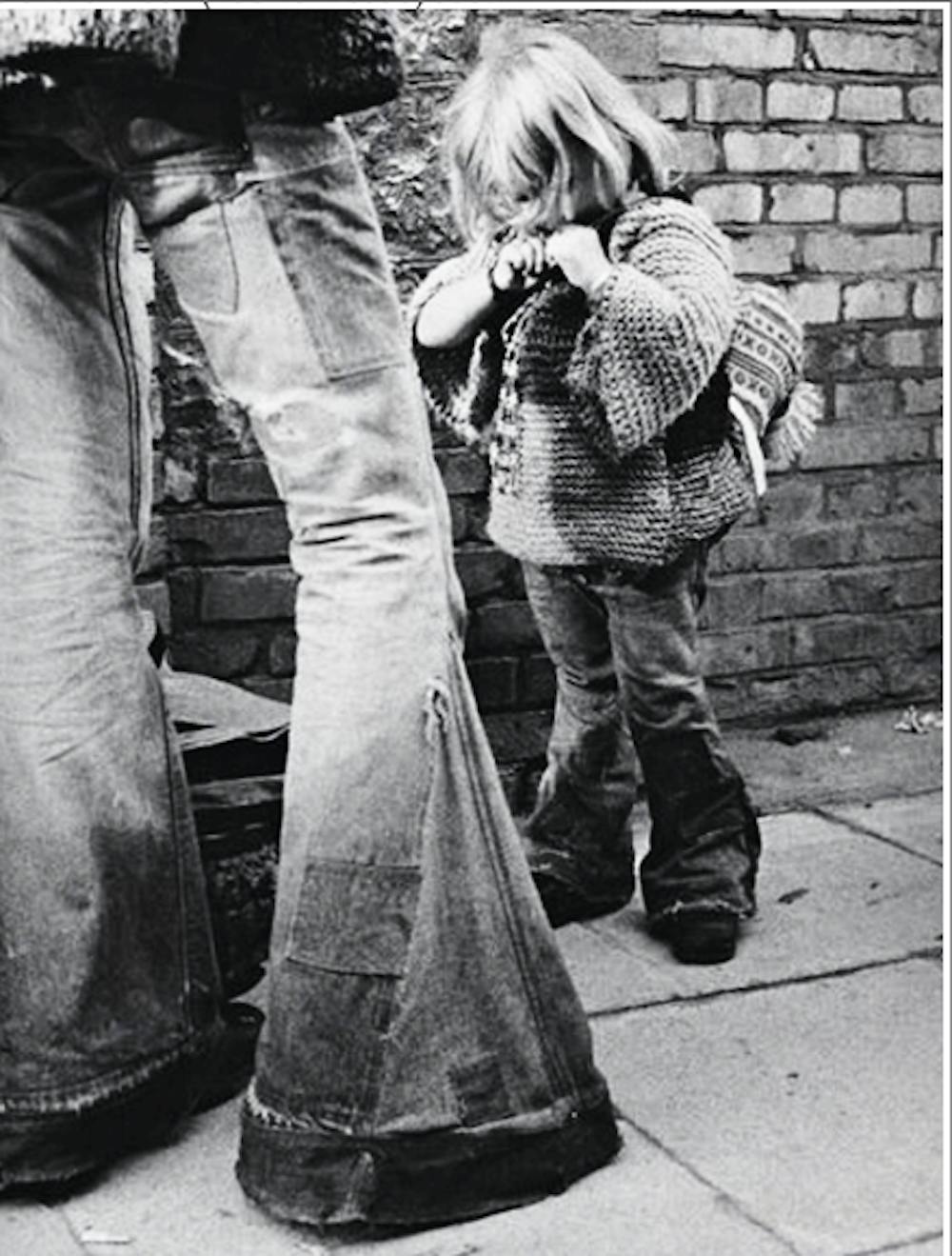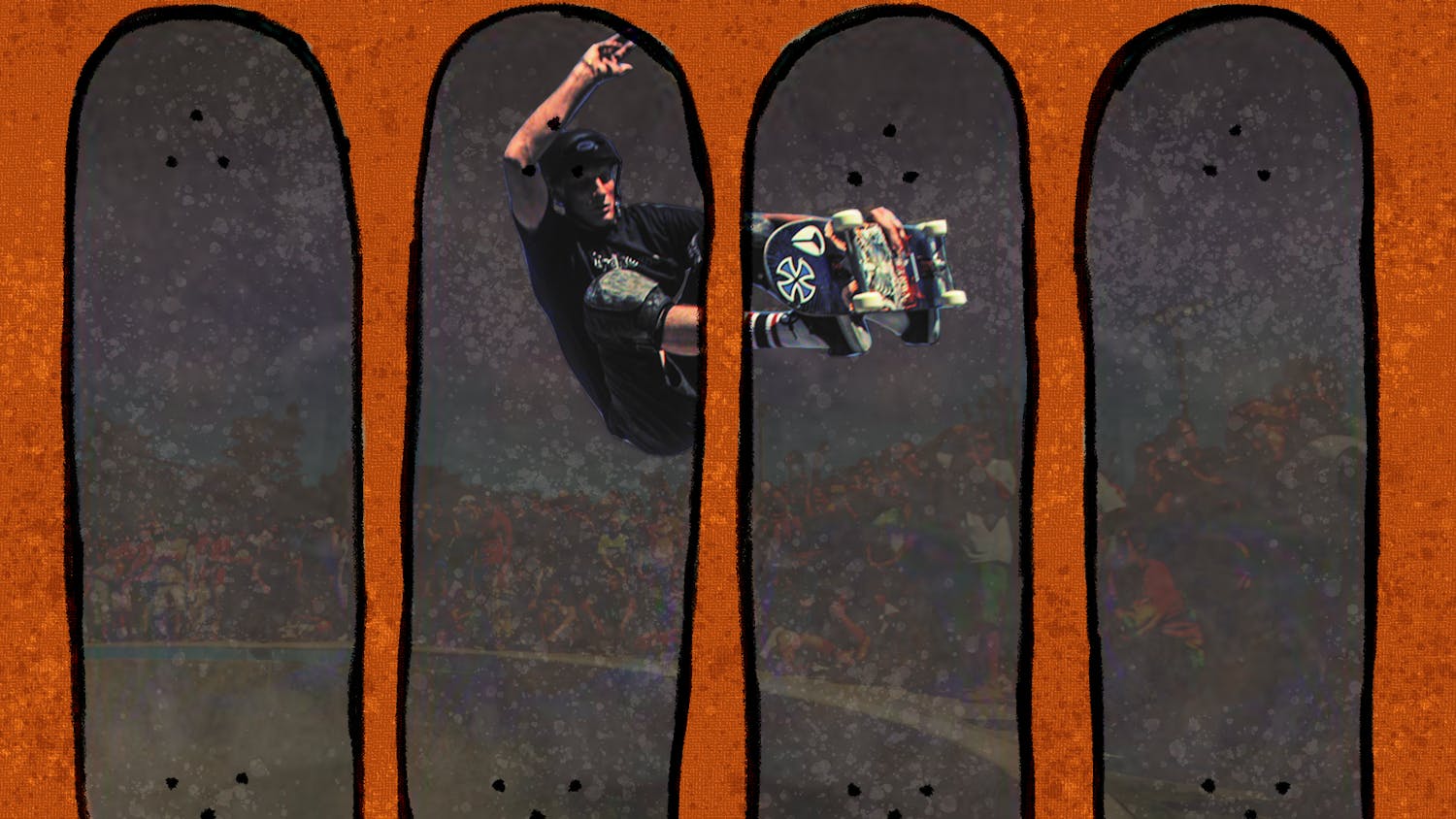What do we really know about bell–bottom jeans anyway?
These were the jeans that had leg holes the same circumference as the afros and mullets just feet above them—the kind that people weren’t sure wasn’t a denim dress until they saw the divide between the legs they were crowned upon.
What we think we know about this obscure fashion trend usually comes from Bee Gees’ music videos, faint memories of watching Godspell and most importantly Cher. But it seems alien to think that 40 years ago, outside of the TV screen, Locust Walk could have been a home for the craze. It’s odd to think that Locust might not have always been ruled by the perfectly well–fitting, stiff, just ironed styles of today. We see bell–bottom jeans with a sense of alarm, not associating ourselves with the lazy, relaxed styles that campus used to enjoy.
Maybe bell–bottom jeans are a reminder then. A mental note that a counter–cultural move- ment of relaxed styles not only existed, but flourished. The jeans were as much a symbol for peace as tie–dye shirts and flowing hairstyles.
It’s comforting to know that free–spirits were the norm, at least for a brief amount of time,and we’ll always have the photos of outlandish bell–bottom jeans to prove it.







